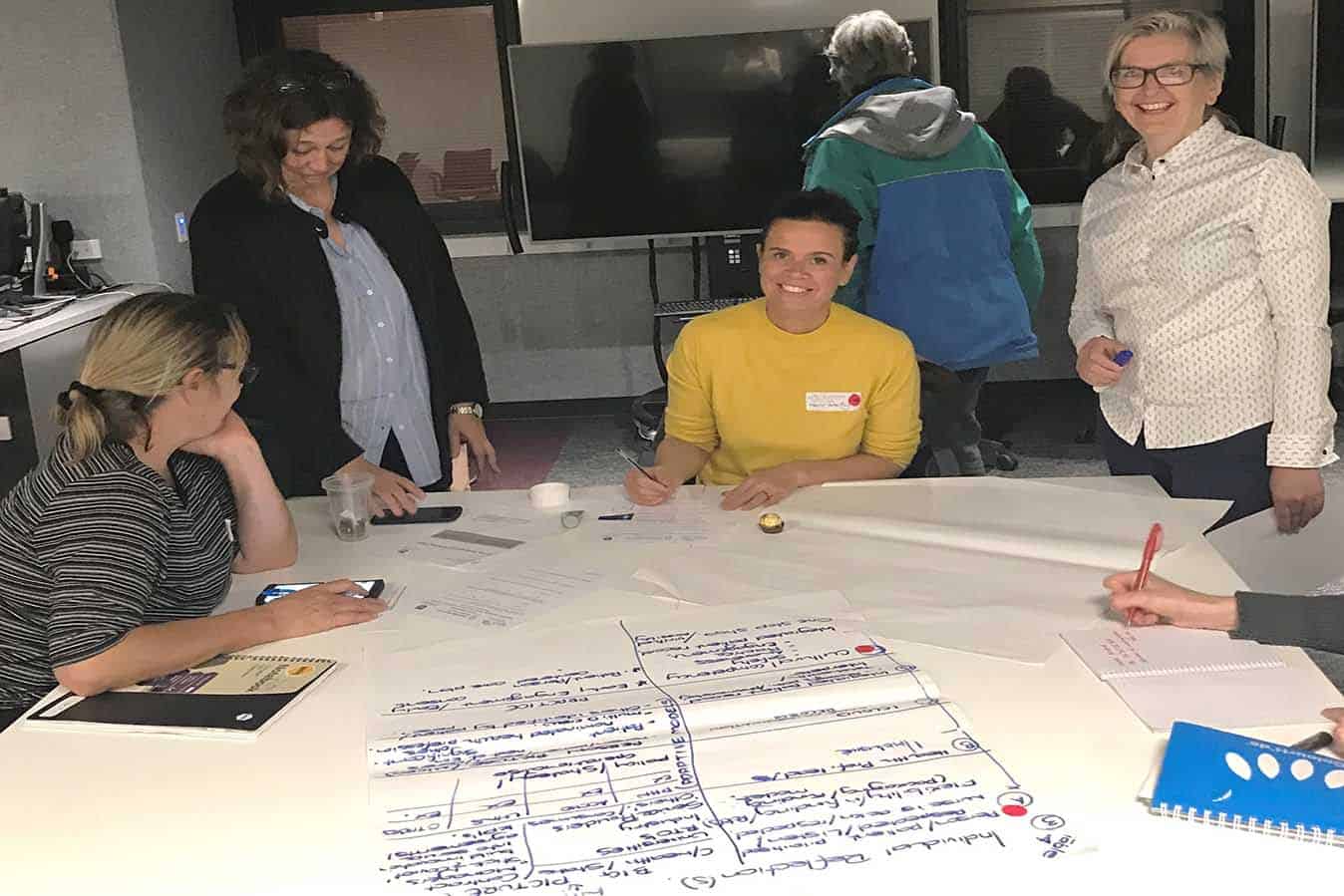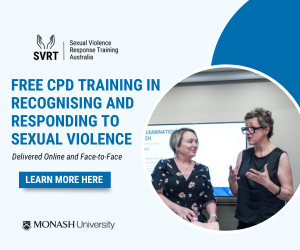To engage parties from both the primary and tertiary healthcare sectors with an interest in the management and care of people living with multimorbidity (MM), a stakeholder forum was organised, as part of a broader PhD action research study.
The overall aim of the stakeholder forum was to contribute to the planning of a nurse-led model of care coordination service and transition pathway, to improve continuity of care (CoC) across the healthcare sector for people living with MM.
Multimorbidity is defined as two or more co-existing chronic diseases and currently this affects one in five Australians (Britt et al. 2008; Caughey et al. 2013). The most common combinations include arthritis/back pain and vascular disease (66%), followed by a mental health issue and vascular disease and arthritis/back pain (Britt et al. 2008). Due to the complexity of healthcare required for people living with MM, continuity of CoC is increasingly recognised as a necessary component of healthcare delivery to improve care outcomes and mitigate care fragmentation for this group of people (Hirschman et al. 2015; Dreiher J et al. 2012).
There is a paucity of research on nurse-led models of care delivering CoC for people living with MM across the health sector (Caughey 2013; Smith et al. 2012). The stakeholder forum focused on gaining evidence based input from clinicians to develop a nurse-led model of care (MoC) to promote effective transition and partnerships between the tertiary and PHC sectors. The MoC would address care fragmentation and potentially reduce expense, high mortality and admission rates, as called for in a new model of care (Boxall 2011-2012; Caughey 2013).
The Australian Primary Health Care Nurses Association’s ‘Building Blocks’ (APNA 2018) were used as a framework to guide the forum. Facilitated group activities led stakeholders to work through issues on strategy, structure, process, and roles related to a nurse-led model of care coordination service. Skilled facilitators from a range of backgrounds including APNA, consumer representatives, and academics ensured activities were directed, engaging, and productive.
Forum participants included nurse practitioners, clinical practice consultants, nurse unit managers, general practitioners, practice nurses, researchers and health management executives from across health.
from forum participant data
Following the forum, thematic analysis (adapted, Braun & Clarke, 2006) was used to categorise the participants’ activity data of over 343 statements into titles, themes, and eventual synthesised domains & attributes for an exemplar MoC.
The forum revealed agreement that there is a willingness to develop and support nurse-led models of care, tackle potential barriers to care fragmentation, and progress the proposed model. Further research will include a workshop and integration of systematic review findings (in progress) into the exemplar MoC, then testing of feasibility of the MoC in another action research cycle within the PhD project. Articles on the nurse-led model of care coordination and other findings will be published in 2018-2019.
Kate Davis, RN, BNsg, MsClSc. is a second year PhD candidate (Rosemary Bryant AO Research Centre, School of Nursing and Midwifery, University of South Australia). Kate’s research focusses on the feasibility of implementing a nurse-led care coordination service for people living with multimorbidity, and provision of continuity of care across the tertiary and primary health care sectors.
email: Kathryn.davis@mymail.unisa.edu.au
References
APNA. 2018. ‘Building blocks, Explaining the essential elements of a nurse clinic.’, Accessed 13/2/18. https://www.apna.asn.au/nursing-tools/nurse-clinics/Buildingblocks.
Boxall, A. 2011-2012. “What are we doing to ensure the sustainability of the health
system?” In, edited by Parlaimentary library. Canberra: Australian Government.
Britt, Helena C, Christopher M Harrison, Graeme C Miller, and Stephanie A Knox. 2008. ‘Prevalence and patterns of multimorbidity in Australia’, The Medical Journal of Australia, 189: 72-77.
Caughey, G. E. 2013. “Ageing well ageing productively: People living with multiple chronic health conditions final report.” In.: Universtiy of Adelaide, Flinders University, University of South Australia.
Dreiher J, Conmaneshter D, Rosenbluth Y, Battat E, Biterman H, and Cohen A. 2012. ‘The association between continuity of care in the community and health outcomes: a population based study ‘, Israel journal of health policy research, 1.
Hirschman, K. B., E. Shaid, K. McCauley, M. V. Pauly, and M. D. Naylor. 2015. ‘Continuity of Care: The Transitional Care Model’, Online Journal of Issues in Nursing, 20: 1.
Smith, S. M., H. Soubhi, M. Fortin, C. Hudon, and T. O’Dowd. 2012. ‘Managing patients with multimorbidity: systematic review of interventions in primary care and community settings’, BMJ Open, BMJ 2012;345:e5205 doi: 10.1136/bmj.e5205 (Published 3 September 2012).










One Response
Love what you said about “Nurse-led care coordination service: engaging stakeholders for continuity of care”
This is an one of the rarest article which I recommend for my all friends and colleagues.
I am gonna share this on my social media pages.
Thanks for writing this and sharing with us.
keep it up.
cheers!!